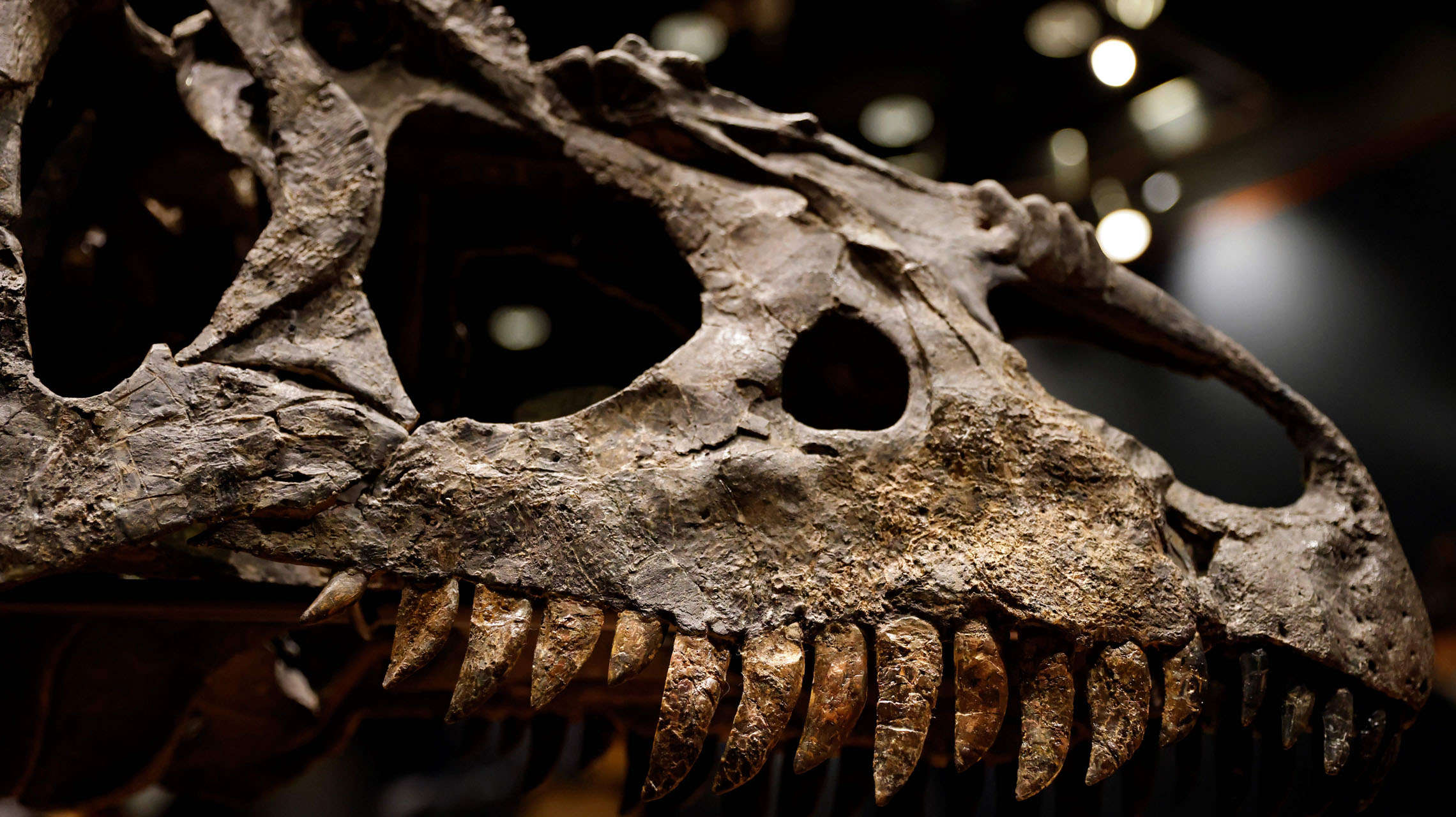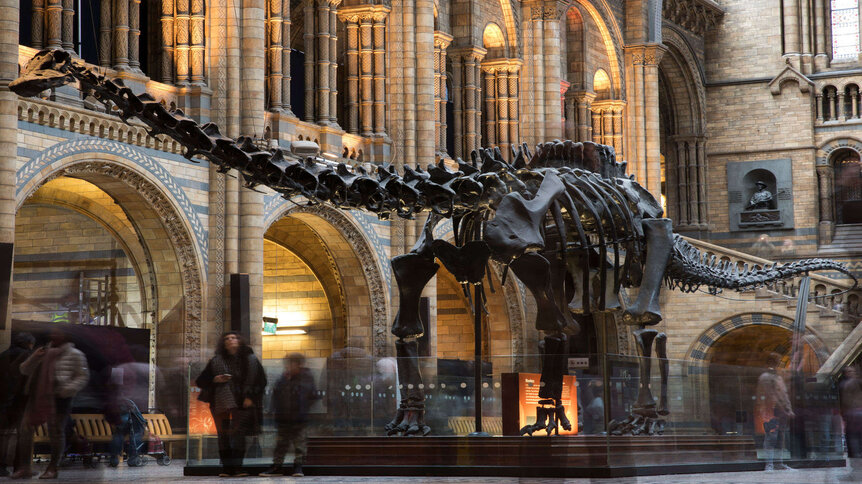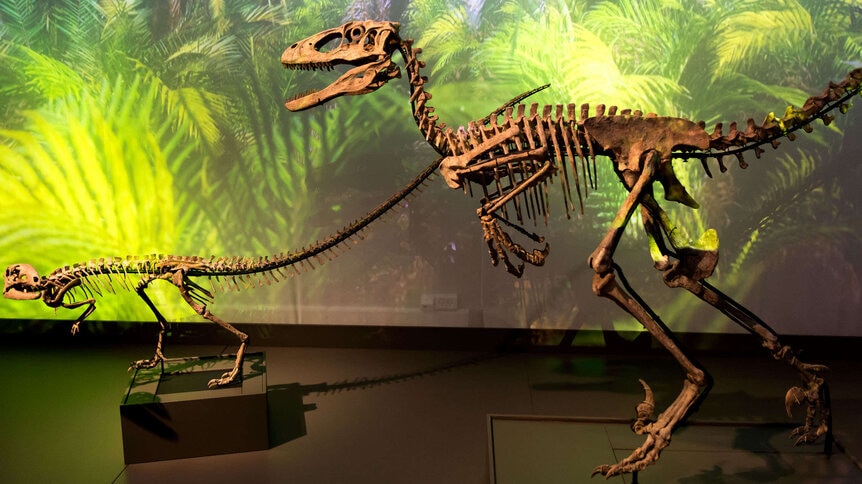Create a free profile to get unlimited access to exclusive videos, sweepstakes, and more!
The hugest dinosaurs may have been clumsy on land, because they probably evolved in water

The scene is iconic. As the Jeep passes a lush, verdant landscape, something unreal comes into view — brachiosaurs and Parasaurolophus taking an afternoon drink from a lake as the symphony in the background builds up to a crescendo. The problem is that none of this is real.
This is not just about Jurassic Park being fiction. It seems that there has been fiction hiding in the science of paleontology ever since dinosaur bones started to emerge from their incidental graves underground. Dinosaurs, at least the most massive ones, could have never meandered through the trees or run fast enough to chase down an SUV. No T. rex could have stayed on its feet long enough to terrorize people with thunderous footsteps that overpowered even the sound of a storm. It would have barely been able to stand.
Watching prehistoric scenes from Steven Spielberg’s imagination would give biologist Brian J. Ford an incredulous reaction. This is why he published his studies in the book Too Big to Walk. As Ford sees it, there is no way a Brachiosaurus could have held itself up on four legs as if it ruled the place. This beast would have had a better chance in water.
“The largest land animal we know is about 10 tons; a whale can be about 10 times that size, but only because it evolved in water,” Ford tells SYFY WIRE. “I reasoned that the land must have been largely submerged under shallow lakes and seas, and it was because of this environment that there was an imperative driving the move towards gigantism. It could not have happened for any other reason.”
Meaning, dinosaurs must have evolved in water to reach the outrageous sizes they grew to. But what about all those re-articulated skeletons in museums? In 1993, the Diplodocus skeleton (nicknamed "Dippy") in the Natural History Museum of London was updated to lift its tail off the ground. The decision that sparked similar changes in other museums was both right and wrong. They were right about dinosaurs not leaving behind any tail drag. What they were wrong about was the reason why there was a lack of evidence for the same kind of drag we see in alligators when they crawl out of a swamp.
No animal could have ever evolved to burn such an enormous amount of energy for keeping a tail that heavy in the air. That is just not how evolution works. Organisms evolve to conserve energy for when they need it most, not to senselessly burn it because paleontologists are often adamant in their belief that dinosaurs were terrestrial reptiles. Insisting they are terrestrial could have only led to the assumption that they left no drag marks behind because their tails were in the air. However, the reason could be instantly explained if dinosaurs were semi-aquatic creatures whose tails floated.
“They say dinosaurs needed to counterbalance their long necks, but a giraffe has no such need, and its tail weighs nearly nothing compared to the rest of its body,” Ford says. “It was the desperate fate of the muscle cells inside the purported tail that proved my theory. Half the dinosaur’s intake of food would be burned by holding up the tail, if it was a land animal.”
Being buoyed by water would have meant that literal tons of weight were taken off the legs of monstrous dinosaurs, legs that were inadequate to support so much bulk. Ford’s theory has unfortunately taken years to break the surface. As a cell biologist, he was vilified by paleontologists who said he was imposing on a science outside his realm. The vision of dinosaurs trampling through jungles, basking in the sun, and only ever approaching water to drink has been ingrained in paleontology. Just look at any recreation in a museum. Unless they had fins like a mosasaur, plesiosaur or other marine species, dinosaurs are shown upright.
“T. rex looks just like a present-day crocodile, but its strong hind legs were clearly used to propel itself along grazing for prey through shallow water,” Ford says. “There is no other means of accounting for those tiny forelimbs.”
Then there is the issue of how dinosaurs could have ever been able to mate and breed on land if they spend their lives standing, which would have been as much of a struggle as it is for a female sea turtle to push herself far enough from the shore so she can lay her eggs. Mating in water would have made far more sense if a creature that weighed a hundred tons needed to support another hundred on its back. Ford does believe that dinosaurs could have dragged themselves out of the water temporarily to lay eggs, and that hatchlings would have been able to frolic near the shore. It is possible smaller dinosaurs did spend more time on terra firma.
However, the larger those hatchlings grew, the more they would sink into the mud at the water’s edge and therefore have to retreat deeper into the water. Ford thinks that also explains why dinosaur footprints are always so unusually shallow.
“Gigantic dinosaurs are often portrayed standing on a muddy shoreline, which simply isn’t possible,” he says. “Only the buoyancy of an aquatic environment can possibly explain why all their fossilized footprints are a few inches deep, and never more.”
There is even more evidence of oversized dinosaurs being semi-aquatic in the fossil record. Dinosaur coprolites (fossilized feces) unearthed by miners accumulated in layers where what is now land was once mostly submerged in warm seas. There were just too many of these coprolite beds to have only been produced by marine dinosaurs and other marine creatures. Eating enough to produce that much fertilizer was made possible by long necks in sauropods, which enabled them to reach far beyond the shore for leafy branches, and heavy bone-crushing jaws and skulls in fearsome therapods that would have otherwise been sluggish on land.
At least the tides are turning in Ford’s favor. Though it took years to gain any kind of paleontological acceptance, the discovery that spinosaurs were swimmers rather than land dwellers made enormous waves. T. rex was probably like a gargantuan gator that hunted with its eyes and nostrils above water. As with many scientific theories that are doubted at first, the idea that dinosaurs could have only evolved in water, living a semi-aquatic lifestyle much like hippos or crocodilians, is finally catching on. There could be a day when most paleontologists will claim that it was known all along.
“It’s unexpected thinking by innovative thinkers that gives us breakthroughs,” Ford says. “Conventional academics usually go on to develop what the innovators thought up. If you come up with a meticulously compiled theory that shows they’re wrong, you’ll be attacked from all sides. But it’s worth it.”
















